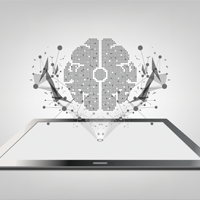Hundreds of staff within a CSPs now use big data as part of their daily routine. So does this mean that they are all dependent on a handful of data scientists, or have systems now advanced to a point where they can utilise big data independently? In this blog we take a look at some of the ways big data analytics is being used in telecoms and the role of the data scientist.
It is no surprise that the telecoms industry is at the forefront of big data analytics; the statistics speak for themselves:
- There are more mobile devices in the world than people
- The average person interacts with their mobile phone 1500 times a week
- Internet usage over mobile devices will grow at a CAGR of 57% over the next 5 years
CSPs have embraced big data and use it for a diverse range of applications; optimising the mobile network, monitoring the customer’s experience, recommending the best price plans to customers, improving operational efficiencies and identifying cost savings. And to initiate all of this, CSPs needed skilled data scientists.
So what actually is a data scientist?
The data scientist profession has arisen in line with big data analytics. Evolving from the traditional data analyst role, a data scientists combines IT, modelling and statistics with business acumen, strategy and communication. Their role is not only to analyse a single data stream, but compare multiple data streams from multiple sources, and provide strategic business recommendations from this.
How do data scientists use big data analytics in telecoms?
With every phone call, text and email, hundreds of data records are instantaneously created; the cell towers used, the quality of the call, whether the data was used for web pages or video etc. This can all be used to better understand the performance of the mobile network and to see how subscribers are using their services to identify upselling opportunities. A data scientist analyses and compares hundreds of data feeds from multiple tools to fully understand the trends and subsequent opportunities identified from big data analytics. This could be an easy win, with something as simple as adjusting the angle of a cell tower to improve coverage for a key corporate account. It could also be something much more complex, such as using performance data trends to predict future network outages and required maintenance programmes.
But big data analytics is changing
With an ever increasing amount of data passing through the network, it is impossible for operators to depend on a handful of data scientist to do everything. Continually increasing headcount is not a viable option, therefore big data analytics tools have had to advance to tackle this.
One Centralised Application
By making big data accessible to a wider pool of resources, CSPs can analyse more data at a faster rate and maximise on its value. To achieve this, CSPs are turning to software solutions that can handle all of their data in one central application. Multiple users can then easily access, correlate and compare all data feeds from one screen.
Excellent User Interface
To successfully reduce the dependency on individual data scientists, software solutions must be designed with an excellent user interface. Often, one of the biggest challenges is understanding what data needs to be looked at, and what to actually look for. With a drag and drop user interface, any user can easily visualise huge data sets and rapidly gain insights from it.
Guided query builder
The ability to build new queries without having to code them from scratch is also another advantage, which opens the door to a significantly higher proportion of user groups. A guided query builder empowers individuals to not only use pre-defined reports, but also gives them the ability to build new queries on the data and identify fluctuations and long term trends across the network and services delivered to customers.
Of course, there is no denying that there is still a role for data scientists in the telecoms industry. A deep understanding of network trends, statistics and customer behaviours is still needed, which can often only come with experience. However, technology has now advance to a point where you don’t necessarily have to be a data scientists to gain actionable insights from big data, and feel empowered to do so.

